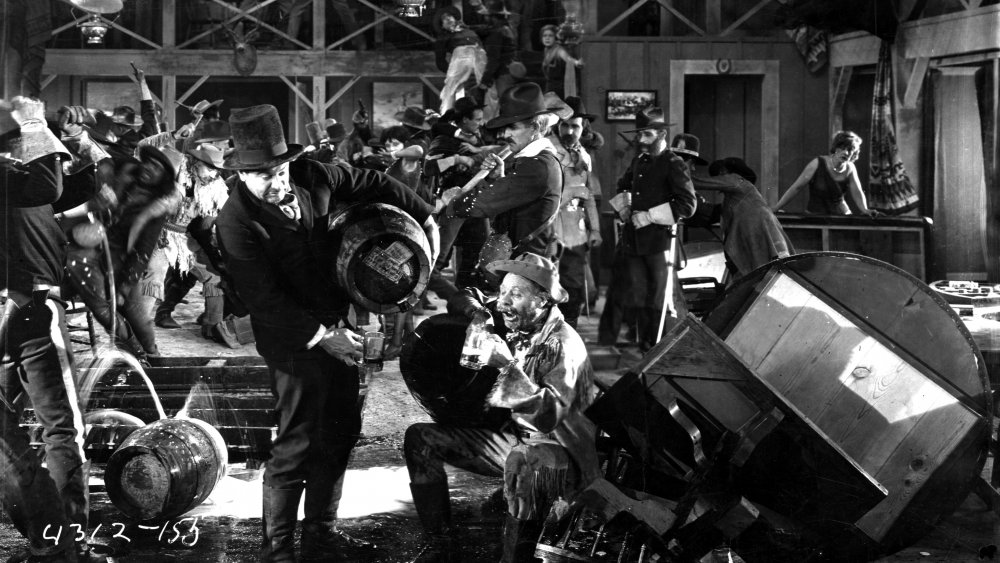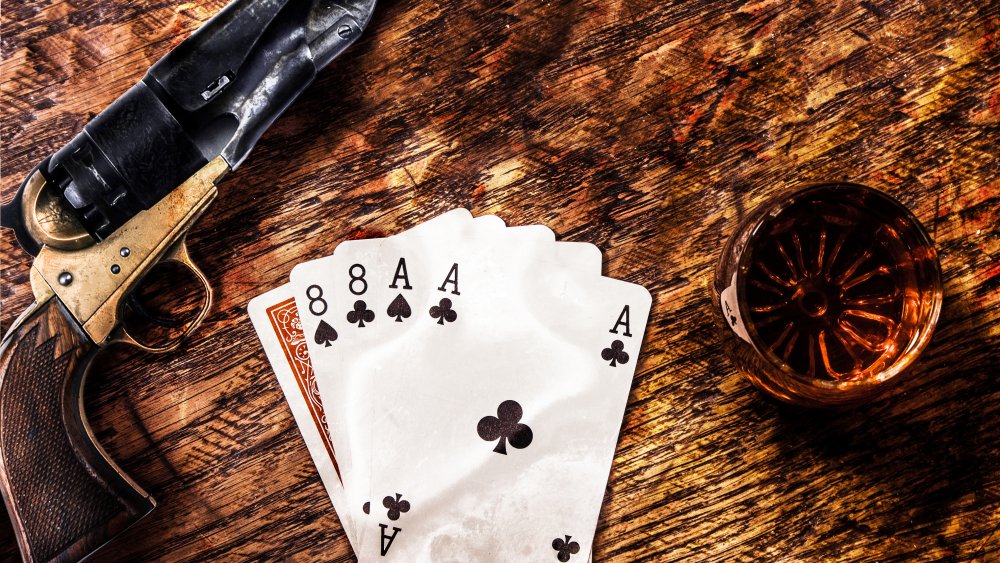How Much Whiskey Did People Really Drink In The Old West?
In 1945's Road to Utopia, Bob Hope and Bing Crosby walk up to the bar. Bing orders a couple of fingers of rotgut. Bob orders a glass of lemonade, and seeing everyone's reaction, follows up with, "in a dirty glass!" Can't look not tough. Especially standing next to Bing.
The rotgut referred, no doubt, to some sort of brown liquor. If it meant whiskey with an E, that meant it was Irish, while whisky (no E) meant Scotch, says Whisky For Everyone. Or something like it. Out on the American frontier, often there wasn't a lot of room for comparison or complaint. The movies and TV would have us believe everybody came to town and knocked back a shot, either to get acquainted, to discuss business, to threaten someone, or to seal a deal. If you were particularly thirsty for a pick-me-up, you could always argue "medicinal," since whiskey was used to counteract any number of ailments, from rheumatism to boredom. It wasn't just the general population, either. As Marshall Trimble, Arizona's official state historian, wrote for True West, "The U.S. Army used either quinine or whiskey for just about every ailment."
We had no YMCAs
It would be a mistake, however, to think that it was all one-shot-after-another. These were Victorian times, and as Sherry Monahan wrote for True West, "fancy drinks were all the rage." In terms of storytelling, it probably ranks right up there with ordering a lemonade, dirty glass or not, but it was not at all unusual for a saloon to offer a fair variety of whiskey-based mixed drinks, even in rough-and-tumble Tombstone. Possibilities might include a whiskey punch, or Tom and Jerry, or what's called a "stone fence." As for the whiskey itself, that came in grades — some made in the U.S., while others were imported, with names like Dewar's, Jameson's, and Canadian Club.
Sometimes, the demand dictated that proprietors had to get creative with the supply, according to William Foster-Harris's The Look of the Old West, mixing their own concoctions with a mixture of river water, pure alcohol, plug tobacco, and even rattlesnake heads, presumably for flavor. Alcohol was a common ingredient in patent medicines of the time, and, combined with opiates, was freely sold to relieve all manner of pain and discomfort, particularly to Wild West women. Wyatt Earp's common-law wife, Mattie Blaylock, died of a laudanum overdose after they split, according to Legends of America.
Boredom was no small factor dictating people's drinking in the Old West. As Wyatt Earp is said to have told his biographer, Stuart Lake, "We had no YMCAs."

